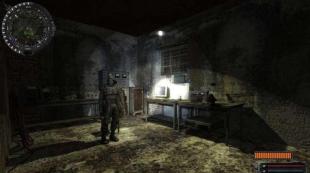Build a house where to start documents. How to obtain permission to build a private house and what are the consequences in case of unauthorized construction? What increases the cost of construction
It’s a pity that you can’t buy a plot of land and immediately start building your own house (cottage, dacha). In the modern world, this requires properly executed documents. Before starting construction, you need to submit a complete list of documents for building a house so that they are processed. Documents are also required for the purchase and registration of a land plot.
List of documents for the construction of a private house
To obtain a building permit, you need to contact the administration with a corresponding application. Here is a small list of documents that should be attached to the application:
- resolution of the head of administration on the provision of a land plot for individual housing construction;
- contract of sale;
- general plan;
- site passport;
- an act on the full-scale establishment of the boundaries of a land plot and the breakdown of buildings, red lines and axes of the building.
Preparation of documents for the construction of a residential building
After reviewing this list of documents, the head of your administration will issue a resolution on permission (or refusal of permission) for the construction of a private residential building. If all is well, then a project passport for a private residential building will be issued, the composition of which is as follows:
- administration resolution on construction permission;
- a document certifying the developer’s right to the land plot;
- a copy of the master plan of the relevant urban planning documentation;
- situational plan;
- technical conditions (TS) for connection to utility networks (with diagram);
- floor plans, sections, facades;
- an act on the full-scale establishment of the boundaries of a land plot and the breakdown of buildings (with a drawing diagram).
That's not all. The project of an individual private residential building will be entered into a separate folder.
Its composition:
- situational plan (M 1:500), showing the location of the construction site in connection with the nearest settlements, sources and external networks of energy, heat and water supply, structures, sewerage networks;
- topographic survey of the area with the adjacent part of the street (M 1:500);
- master plan of the site with vertical layout and linking the project to the area (M 1:200, 1:1000);
- basement plan (technical underground, ground floor);
- floor plans (M 1:100, 1:50);
- main and side facades of buildings (M 1:50, 1:100);
- characteristic sections (M 1:100, 1:50);
- plans for floors and coverings of non-repeating floors (M 1:100);
- plan of the roof truss system (M 1:100);
- roof plan (M 1:100, 1:200);
- foundation plan (M 1:100, 1:50);
- cross-section of foundations, characteristic architectural and construction units and details (M 1:10, 1:20);
- general explanatory note and technical and economic indicators;
- cost estimates and financial considerations for construction costs;
- engineering support drawings (as per design specifications).
Documents for registration of land plot
If you have not yet registered a plot of land, the following information will be useful to you. To register a land plot, you need to submit the following documents:
- a statement that states: the purpose of using the land (organization of a farm or personal enterprise, construction of a private residential building, gardening, etc.), location and size of the land plot.
- a copy of an identity document (passport).
- contract of sale.
- documents, content information about a citizen’s right to a land plot (the right to perpetual use of a land plot, or the right to lifelong inheritable possession is considered).
First of all, you will have to disturb the Ministry of State Property Management. An application is submitted there along with a copy of your passport. It is important to know whether the plot was previously privatized or not. If not, the registration will take less time. Ideally, the application review process takes 2 weeks. But in practice, unfortunately, it takes more time.
After a decision is made to register a land plot, the applicant receives a copy of the decision document. The applicant makes measurements of the site and creates a cadastral plan at his own expense. On average, this takes a month. After this, the state enters into a land purchase and sale agreement. The exception is cases in which the applicant received the plot as an inheritance, or free of charge from the state.
After the above steps and processes, you must submit an application for registration to the Federal Registration Service by submitting the following documents:
- a copy of an identity document (passport);
- a decision made by the local executive authority on the registration of a land plot;
- contract of sale;
- certified cadastral plan of the land plot.
All documents, except the passport, must be submitted in original and copies.
From paperwork!
- And the first thing to do — prepare a package of documents for the construction of a private house!
But let's go in order. Everyone knows what kind of queues we have for the construction of apartments. Both 5 and 10 years, and some even more, are waiting for the coveted square meters of “precious” housing. “Precious” - in the literal sense of the word. Prices square meter of new building growing like mushrooms after rain. And nothing can stop them!
So the question arises, as in Chernyshevsky’s novel: “What to do?” Wait for who knows how long for construction to start? Worry during construction: “If only they didn’t throw me away!”? Do our “miracle” builders have to finish and redo a lot of work after the house is put into operation? Adding almost a quarter of the cost of the apartment to the astronomical sums spent?
If nothing else is in sight, then this is certainly not the worst way out of the housing crisis.
But if there is an opportunity to build a private residential building on your own, albeit small, piece of land, then many have recently chosen this particular method of solving the issue of square meters.
But, my dear readers, I want to warn those who are still making a choice.
Whether to build an apartment or build a private house, there is a huge difference. I think you can guess which one yourself.
- It will not be possible to build a private residential building without effort!
You will have to, if not personally wave a shovel and knock with a hammer, then at least be in the role of an auditor (or supervisor), as well as an accountant or accountant in extreme cases. Control and accounting come first! Otherwise, your home will be nothing but memories in the form of a pile of construction waste.
The thought among our builders is ineradicable: “What I work with is what I have!” And there's nothing you can do about it.
The future private owner will also benefit from knowledge about construction technologies, since construction work requires complete immersion in the process. Here, information from the Internet about building materials and construction technologies will be very useful.
So, the choice is made! Begin construction of a private house!
But you can't build a house in the air! Although some manage to build in the air, on the water, and on five square meters.
But that doesn't suit us. The idea of a permanent building in the form of at least a cottage is firmly in the minds of the Slav, if there is not enough money for a palace. And all this on its own decent acres: with a vegetable garden, a garden, a flower bed, a lawn, and recently with a swimming pool - not bad either. Three or even six hundred square meters will no longer satisfy our ambitions. The minimum is ten, and if possible, then more. This is where the Russian soul can unfold!
Where to getland for construction of a residential building?
There are several options to consider here.
- Buy plot for construction of a residential building from a bankrupt private owner;
- Buy land with an old house for a symbolic amount, demolish old buildings and build your own mansions;
- Get it for free from the executive committee. This option is more suitable for those who are on the waiting list in need of improved housing conditions;
- Buy at auction;
- Receive an inheritance and so on.
As you can see, there are many options. Everyone will find one that suits both their ambitions and their wallet.
Having purchased land, it is better to immediately draw up the paperwork: make state registration of land so that there are no problems later.
How and where to obtain permission to build a private residential building?
Papers are drawn up in the executive committee, or more precisely in the architecture department.
There you write an application for the issuance of building permits.
The documentation folder includes various types of permits to carry out certain works:
- permission to build a private house and non-residential buildings,
- projectpassports developer,
- and formal approvals various offices, which include firefighters, “electric networks” and other serious organizations,
- residential building project.
You can collect all the signatures and approvals yourself, but it is much easier to act through the “One Window”. You are only required to indicate in the application the building material from which you plan to build your property and provide an approximate sketch of the dimensions of the future home.
But, dear private owners, if you have a site with dense neighboring buildings, consult with the designer before writing an application. He will adjust your wishes regarding the location of the building, since our choice does not always correspond. And they need to be taken into account, otherwise later you won’t be able to put the house into operation, the firefighters won’t sign act of entry!
We received a consultation, determined the location and size, and can write an application. You will receive a sample application from the executive committee. You must have documents for the land with you; without them, applications will not be accepted.
In two weeks you will receive it in your hands “Extract of the decision of the executive committee” With
- 1) resolution,
- 2) an approximate development plan and
- 3) conclusions of coordinating organizations.
Where can I get a residential building project?
If you have enough knowledge and experience, you can draw it yourself residential building project, but it is better to contact specialists. There may also be several options here:
- can choose ready House project,
- Can order individual in any design organization,
- Can negotiate with a private designer licensed for this type of activity.
It's as you wish.
What is a developer's passport?
- Note, developer's passport– this is a very important document and should not be ignored!
Here, again, you will need to either independently or through the “One Window” technical specifications forengineering and technical support for a residential building according to the list established by the architectural department.
Having submitted the technical conditions for review and approval, after a while you will receive in your hands developer's passport.
What should be in the developer's passport?
- it should have everything that will be built is indicated: house, garage, etc.;
- address indicating the street and house number;
- extract of the decision executive committee;
- title document for a land plot;
- House project;
- master plan with neighboring buildings;
- technical specifications.
Now you can start building a private residential building.
In total, the entire procedure for preparing documents in the executive committee takes a little more than a month, but this does not take into account the time spent on preparing the project.
You will only have to pay for the application (and, by agreement, for the project).
That's all. There's just a little bit left - to build a house!
There are more and more people wanting to build their own home. Surely you are one of them, since you visited our site. The desire to cope on your own is commendable. But, nevertheless, we must give advice - specialists are people who have spent several years of their lives learning construction. And it is extremely easy for them to build a house of the required quality in the optimal time frame.
Specialists know all the intricacies of the construction process, rules and sanitary standards, will make sure that problems do not arise in the future, will give the necessary recommendations, and will save time. That's why We do not recommend saving on hiring craftsmen from a successfully proven company in the construction market of your city.
Regardless of who will carry out the construction process, you need to know what tasks will require solving before you start pouring the foundation. Let's talk about this now.
Buying a plot
 So, you need to buy the plot on which the house will be built and properly formalize the legal transaction. I think there is no need to say that it should be located close to other existing residential buildings, because utility networks will have to be installed. And “dragging” them from afar is unprofitable.
So, you need to buy the plot on which the house will be built and properly formalize the legal transaction. I think there is no need to say that it should be located close to other existing residential buildings, because utility networks will have to be installed. And “dragging” them from afar is unprofitable.
It is important to correctly correlate your financial capabilities, the size of the plot and the approximate size of the future home. The ratio of the area of the house to the total area of the plot should be 1 to 10.
Remember that an area that is too large is difficult to care for, and a small area will not allow it to “expand” in the future.
However, even before purchasing land, you must hire specialists who will conduct a geological survey of the site and topographic survey of the area. They will take soil and water samples, conduct laboratory soil tests, advise on the type of foundation, and draw up geological sections of the site. All these efforts will be aimed at finding dangerous places that will bring many problems in the future.
 Many experts advise conducting geological research precisely at the time of site selection.
Many experts advise conducting geological research precisely at the time of site selection.
Also, before purchasing, you need to collect as much information as possible about the site. Chat with your neighbors. They are the ones who often tell a lot of necessary things. If the plot was already owned before you, cadastral data about it can be obtained from the administration.
Avoid areas:
- Close to garbage dumps
- Close to wastewater treatment plants
- Near the swampy area
- With the impossibility of access for construction equipment there
- Located far from social infrastructure
Project
 The second step is preparing the project. You need to either download a ready-made one available on the Internet/purchase from a construction company, or contact specialists to develop an individual one together with them.
The second step is preparing the project. You need to either download a ready-made one available on the Internet/purchase from a construction company, or contact specialists to develop an individual one together with them.
It is not recommended to design a house yourself, just like designing a house. Due to the lack of necessary experience, you cannot predict all mistakes in advance. And it will be too late to redo something at the moment when the foundation is erected, part of the house is built. Any adjustments made to the project directly at the construction site will inevitably entail an increase in cost and time.
A standard project is convenient in that you can quickly begin construction, bypassing design work.
You must understand that the house is built to suit your living conditions. You must know exactly:
- How many rooms do you want
- Will there be a second floor?
- Number of permanent residents
- What will be located in the rooms
- What area should they be made of?
- What size should the kitchen and living room be?
- What budget do you have?
- Will you be able to make additional payments, etc., if necessary?
 If, for example, you often invite guests, then it is better to make a spacious living room. If relatives come to you from time to time, then there must be a separate room for them, etc. You must also decide on the construction material, the shape of the house and roof, and the presence of additional buildings in the yard.
If, for example, you often invite guests, then it is better to make a spacious living room. If relatives come to you from time to time, then there must be a separate room for them, etc. You must also decide on the construction material, the shape of the house and roof, and the presence of additional buildings in the yard.
After taking into account all the features of your future residence, you need to contact a designer (you still need to find a good specialist). He will take into account all your requirements and wishes, your available budget, develop a project, and also make the necessary adjustments.
Linking the project to the area
If the site research was carried out immediately, all that remains is to carry out the full-size design of the house. This process is aimed at taking into account the influence of climatic factors, determining the most optimal position of the house on the site for comfortable living, and determining the boundaries of your territory.
Construction permit (approval)
 Why build a house without coordinating the process with local governments? After all, they can demolish it later. Obtaining a building permit will help you avoid problems.
Why build a house without coordinating the process with local governments? After all, they can demolish it later. Obtaining a building permit will help you avoid problems.
- Get permission to build a house. To do this, prepare a package of necessary documents: a passport, documents confirming that you are the owner of the site, an application to the head of the administration in which you ask to give the go-ahead for construction, a copy of the house plan, a copy of the license of the company that developed the project for you. In each region of the country, the list of documents may differ, so visit your city administration and check all the details.
- Receive a site inspection report. To do this, contact the geosurveillance department and provide them with a topographic survey plan, as well as an act of delineating the boundaries of the site and setting out the axes of the building. If you continue the construction of a house abandoned by the previous owner, you must provide documents for the land and a site plan
- Prepare a construction passport for the facility. To do this, prepare the necessary documents again: passport, land title, site plan, application for a building permit, a notarized copy of the design company’s license, site survey report
- Contact the sanitary-epidemiological and fire inspections in order to agree on the development plan with them. Additionally, the energy and gas schemes must be coordinated with the fire inspectorate
- Once permission has been received, you need to contact the architecture committee, submit the agreed plan there and receive a construction passport
Or maybe you are choosing between a frame and timber house? Then it will help you make your choice.
Choosing a construction company
The last stage of preparation for construction is choosing a construction company (if you hire specialists). If you plan to do the construction yourself, then you can skip this point. Building a house with your own hands reduces costs by 15-30 percent. But sometimes it’s better not to skimp on convenience.
Construction of a house
 The construction of the house is carried out in five stages:
The construction of the house is carried out in five stages:
- Excavation
- Laying the foundation
- Construction of walls and ceilings
- Installation of roof truss system
- Laying roofing material
Excavation
Excavation work begins with leveling the area and digging a pit for pouring the foundation. Excavators and bulldozers are used for this purpose. The bottom of the pit is cleared manually. It is better to start pouring the foundation immediately after preparing the site. Otherwise, the earth may crumble, fill the bottom of the pit, and you will have to clear it again, wasting time and money.
Pouring the foundation
The site is ready - it’s time to build the foundation. A layer of crushed stone, ten centimeters thick, is poured into the prepared pit, on top of which bitumen is poured. Next, formwork is made, a concrete foundation pad is laid, and reinforcing elements are installed.
Construction of foundation walls
When the concrete has hardened, construction of the foundation walls begins. Concrete blocks can be used for this purpose.
Construction of walls and ceilings
 Immediately after laying the foundation, they begin to erect walls and install floors. This process is labor-intensive and we will look at it in a separate article.
Immediately after laying the foundation, they begin to erect walls and install floors. This process is labor-intensive and we will look at it in a separate article.
The final stage of building a house is the installation of the roof truss system and laying of roofing material. When choosing a roofing material, you need to take into account issues such as rain noise and fire safety. If the choice falls in favor, then during the rain you will be able to sleep peacefully. Many articles have been written about other roofing materials on the pages of our online resource.
One of the most airtight roofing materials is. The coating is hermetic, since the sheet joints are fastened using the seam method, that is, without nails, screws and other devices.
And if you have already made a choice in favor of an onduvilla, then you should familiarize yourself with the rules and sequence of installation of an onduvilla.
Or are you a supporter of tiles? Then we suggest reading the article about installing ceramic tiles. But keep in mind that its installation is a complex process.
As you can see, before starting to build your own home, you need to solve a lot of problems, which you now know about.
Video about where to start building a house









